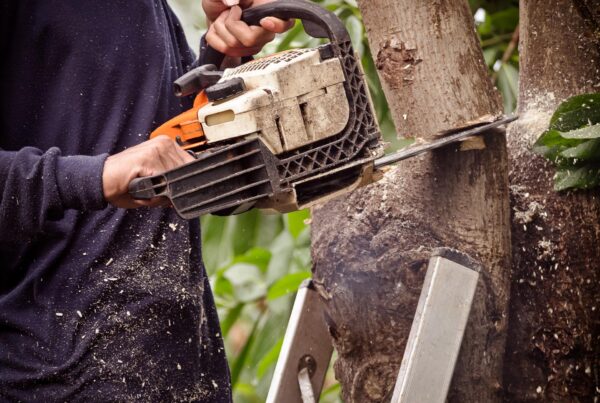As spring blooms in Menomonee Falls, it’s the perfect time for homeowners to spruce up their yards with expert tree care. Emphasizing both aesthetics and health, this guide offers essential tips to help ensure your trees flourish year-round. Trust in over 50 years of dedication and expertise from professionals like RG Tree, who understand the local community’s needs.
Assessing Winter Damage
Winter can take a toll on your trees, making it crucial for homeowners in Menomonee Falls to assess their property’s condition at the beginning of spring. Identifying common winter damage involves looking for signs such as broken branches, bark splitting, and frost cracks. These signs may vary widely depending on the tree species specific to this region.
When planning your first inspection of the season, it’s beneficial to know the typical damage indicators and their corresponding solutions. Engaging local experts from RG Tree, with extensive experience in the community, can offer a thorough assessment, ensuring no detail is overlooked.
| Damage Indicator | Solution | Preventative Tips | When to Assess |
|---|---|---|---|
| Broken Branches | Prune back to healthy wood | Regular inspection and trimming during fall | Immediately after winter storms |
| Bark Splitting | Seal with tree wound dressing if significant | Wrap trunks of sensitive species during winter | Early spring thaw |
| Frost Cracks | Monitor for further splitting or discoloration | Apply tree guards to reduce temperature fluctuations | During freeze-thaw cycles |
Pruning Techniques for Spring
Spring pruning is essential for promoting healthier and safer trees, warding off disease and encouraging robust growth. Specific pruning techniques must be adapted to the diverse species found in Menomonee Falls, ensuring each tree receives appropriate care. Proper cutting angles, trimming deadwood, and removing problematic limbs are techniques that can sustain long-term health.
For homeowners who prefer a hands-on approach, some DIY pruning can be beneficial. Techniques such as using clean, sharp tools and understanding branch collar cuts are crucial. However, some tasks are best left to professionals, especially when dealing with large branches or hazardous heights.
Beyond aesthetics, pruning can also improve tree structure, reduce hazards, and clear away infestations such as fungal growths or pests, a common issue in spring. Regular pruning not only contributes to the health and beauty of your yard but also assures safety for your household and visitors.
Engaging experts ensures that critical pruning tasks are performed correctly, reducing the risk of over-pruning and preserving the natural shape of trees. Creating pruning schedules helps prioritize activities and ensures every tree gets adequate attention, especially during spring rejuvenation.
Enhancing Tree Nutrition and Soil
A critical yet often overlooked aspect of tree care is understanding and maintaining soil health. Robust tree growth depends heavily on soil quality, which affects nutrient uptake. Spring is the ideal time to test soil pH and nutrient levels, ensuring your trees have a balanced supply of essentials.
Fertilization plays a pivotal role in maximizing tree health during spring. Here are some recommended fertilizers:
- 10-10-10 General Purpose Fertilizer
- Slow-release organic options
- Specialty blends for acid-loving trees
Consistently monitoring water levels is also vital, especially as trees transition from winter dormancy. Early detection of nutrient deficiencies through symptoms like discolored leaves can prevent further damage, setting a solid foundation for healthy growth.
Integrating mulch around the base of your trees is another excellent method to enhance soil moisture retention and encourage microbial activity. Mulching should be applied evenly while avoiding direct contact with the tree trunk to prevent rot or pest infestation.
To support long-term soil vitality, consider planting companion groundcover that enriches soil nutrients naturally. These plants act as a living mulch and deter pests while fostering ecological balance around your trees.
Long-Term Maintenance Planning
Effective tree care doesn’t stop in the spring; it requires an ongoing commitment with a well-structured maintenance plan. Creating a seasonal maintenance schedule allows homeowners to anticipate the needs of their trees, keeping them in top shape throughout the year.
For Menomonee Falls property owners, weighing the cost and quality of tree care services is often a priority. Engaging a trusted local service with decades of experience, like RG Tree, assures expert care and advice, enhancing property value through professional upkeep.
Embracing digital tools can simplify tree care management. Apps that offer reminders and updates about seasonal care can help property managers efficiently oversee maintenance tasks. With these tools, it becomes easier to stay informed about the best practices and when professional assistance might be necessary.
Proper tree documentation, including photographs and growth records, can also facilitate effective long-term planning. This data will help you identify patterns, assess health changes, and take preemptive care actions.
Incorporating advanced techniques like aerial drone inspections or infrared health diagnostics can further revolutionize how trees are monitored. These methods capture real-time data, providing deeper insights into overall tree conditions while saving time and effort.
Frequently Asked Questions
Why is spring a crucial time for tree care?
Spring is crucial for tree care because it’s when trees start to bloom after winter. Assessing winter damage, pruning, and enhancing soil nutrition set the foundation for healthy growth throughout the year.
What are common signs of winter damage to trees?
Common signs of winter damage to trees include broken branches, bark splitting, and frost cracks. Identifying these early helps inform necessary care steps such as pruning or sealing wounds.
How can homeowners safely prune their trees in spring?
Homeowners can safely prune their trees by using clean, sharp tools, understanding branch collar cuts, and staying grounded. For large branches or high areas, it’s best to leave the work to professionals.
What are the benefits of regular tree pruning?
Regular tree pruning promotes tree health, encourages growth, reduces hazards, and prevents infestations like fungal growths. It also enhances the aesthetics and safety of the yard.
How does soil health impact tree growth?
Soil health significantly impacts tree growth as it affects nutrient uptake. Healthy soil supports robust tree growth, which is why testing soil pH and nutrient levels in spring is important.
What types of fertilizers are recommended for spring tree care?
Recommended fertilizers for spring include 10-10-10 general purpose fertilizers, slow-release organics, and specialty blends for acid-loving trees, which provide essential nutrients for tree health.
What role does mulch play in tree care?
Mulch helps retain soil moisture, encourages microbial activity, and can improve soil health. It should be applied around the tree base evenly, avoiding direct trunk contact to prevent rot.
Why is a seasonal maintenance plan important for tree care?
A seasonal maintenance plan is important for anticipating tree care needs throughout the year, ensuring that trees remain healthy and property values are maintained with professional upkeep.



